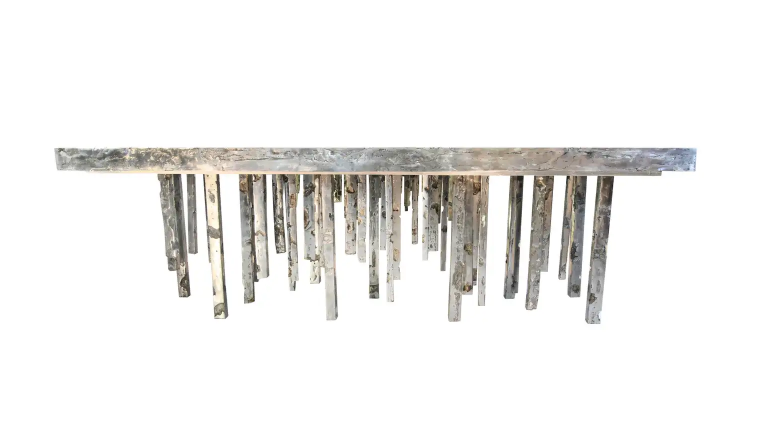Strange to think of it, but it wasn’t too long ago that the idea of buying luxury goods online felt like a Jetsons-esque fantasy. Now we’ve grown so accustomed to the new reality that it barely raises an eyebrow to hear that people are buying houses, cars and $69 million NFTs through digital channels—this is simply what we do now. The question is no longer whether people will purchase pricey goods online, but what they’ll buy, how they’ll transact, and—crucially—who will do the selling.
1stDibs can certainly be credited with being ahead of the curve. Founded in 2001 by entrepreneur Michael Bruno as a way to bring the Paris flea markets to a global audience, the platform has evolved over the years, accruing investment dollars and shifting business models, but the basic thesis has panned out. This year, 1stDibs went public with an IPO that raised $123 million. The accompanying financial documents indicated that, while the company was not profitable, its user base was growing, and with an average order value of more than $2,500, 1stDibs has clearly figured out how to make buyers comfortable pulling the trigger on big-ticket buys. Last week, ostensibly to celebrate its 21st birthday, the company released an e-commerce report that further bolstered its case.
The topline result of the survey is that the market for online luxury shoppers is growing. While it should shock no one that a company dedicated to high-end e-commerce has identified a demand for high-end e-commerce, the numbers are impressive. From 2019 to 2020, 1stDibs’s gross market value (the dollar value of all items sold through the platform) jumped 23 percent to $342 million. The number of active buyers on the site shot up, too—from 39,000 in 2018 to 58,000 in 2020.
The report also detailed some of the platform’s best sellers. Interestingly, while designers may have come to think of 1stDibs primarily as a destination for furniture and decor, its biggest individual sales are in art and jewelry. Of the top 20, only two are home goods: a dining set by George Nakashima and a stunning custom table in zinc and petrified wood by John Brevard. The rest are a mix of jewelry, blue chip art, and—incongruously—a 50-million-year-old crocodile fossil that sold for $880,000.
Still, 1stDibs’s biggest overall category is furniture, and the report breaks down what’s moving at the moment. There, the data mostly conforms to expectations: Top pieces include the ubiquitous Ettore Sottsass mirror, Noguchi lanterns and Faye Toogood’s Roly-Poly armchair. In what is potentially a marker of the COVID work-from-home rush, the most-searched-for items in 2020 were desks.
Of course, now that 1stDibs is a publicly traded company, its metrics will play out against the backdrop of its stock price. Despite undeniable growth, shares are currently languishing at just above $13, down from a peak of $34. During the company’s first earnings call in mid-August, CEO David Rosenblatt urged investors to be patient and let long-term trends play out. “As we look to the future, it is important to remember that not only are we still early in the online adoption curve of our industry, but we are early in the development of our own company,” he said. “I believe that we will see as much change over the next five years as we have seen in the prior five.”
Homepage image: This table in zinc and petrified wood by John Brevard is the most expensive piece of furniture 1stDibs has sold. | 1stDibs





























